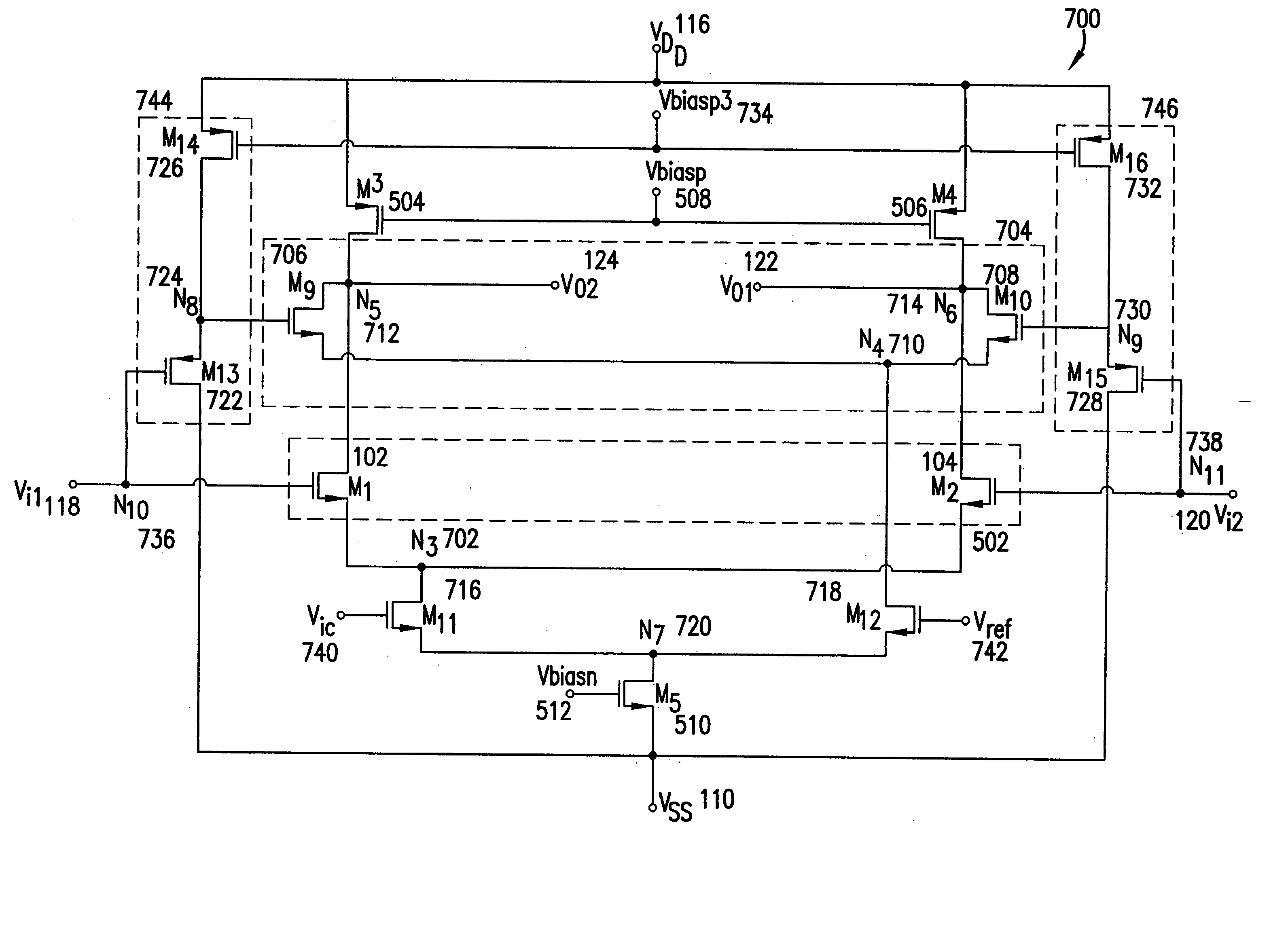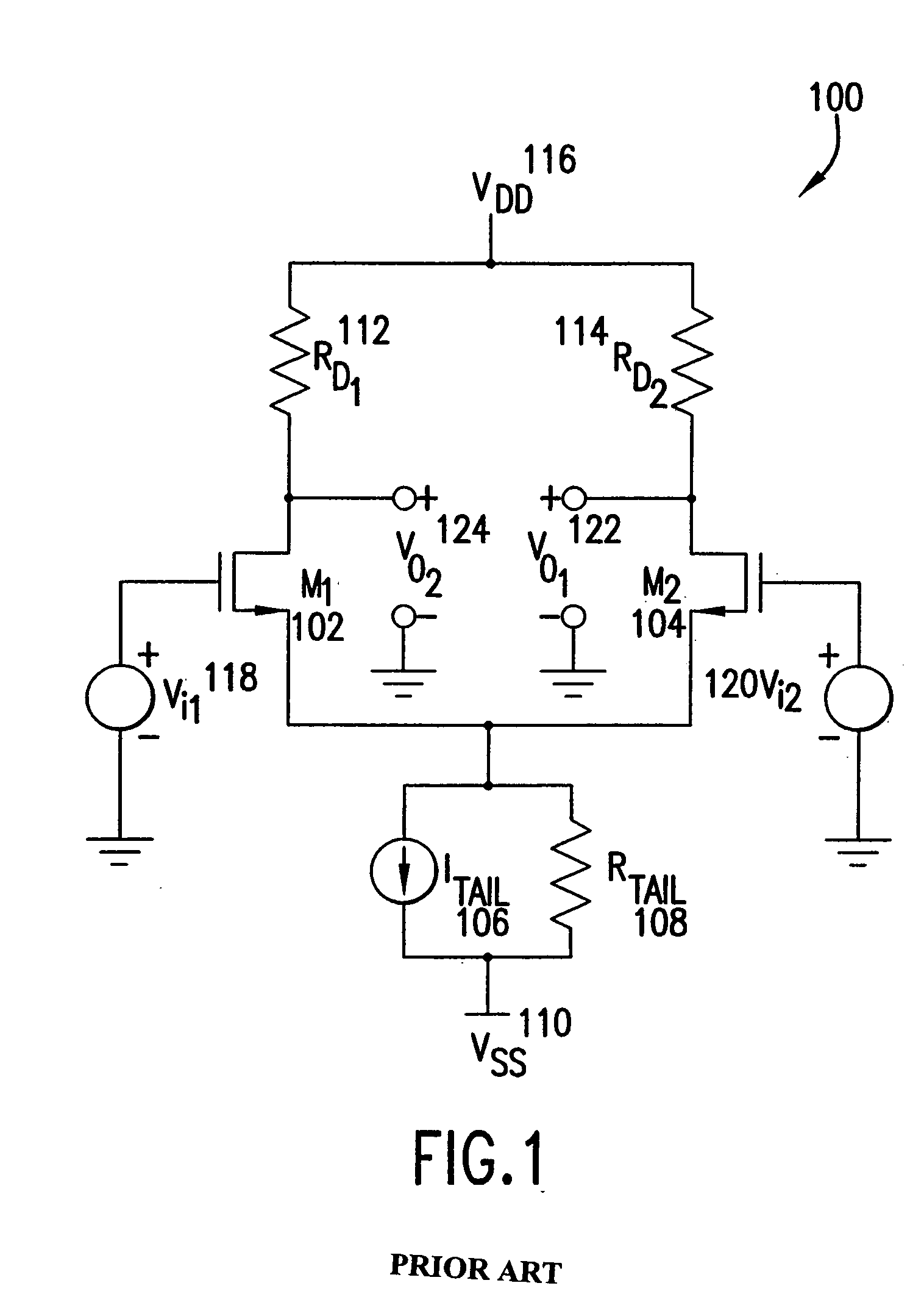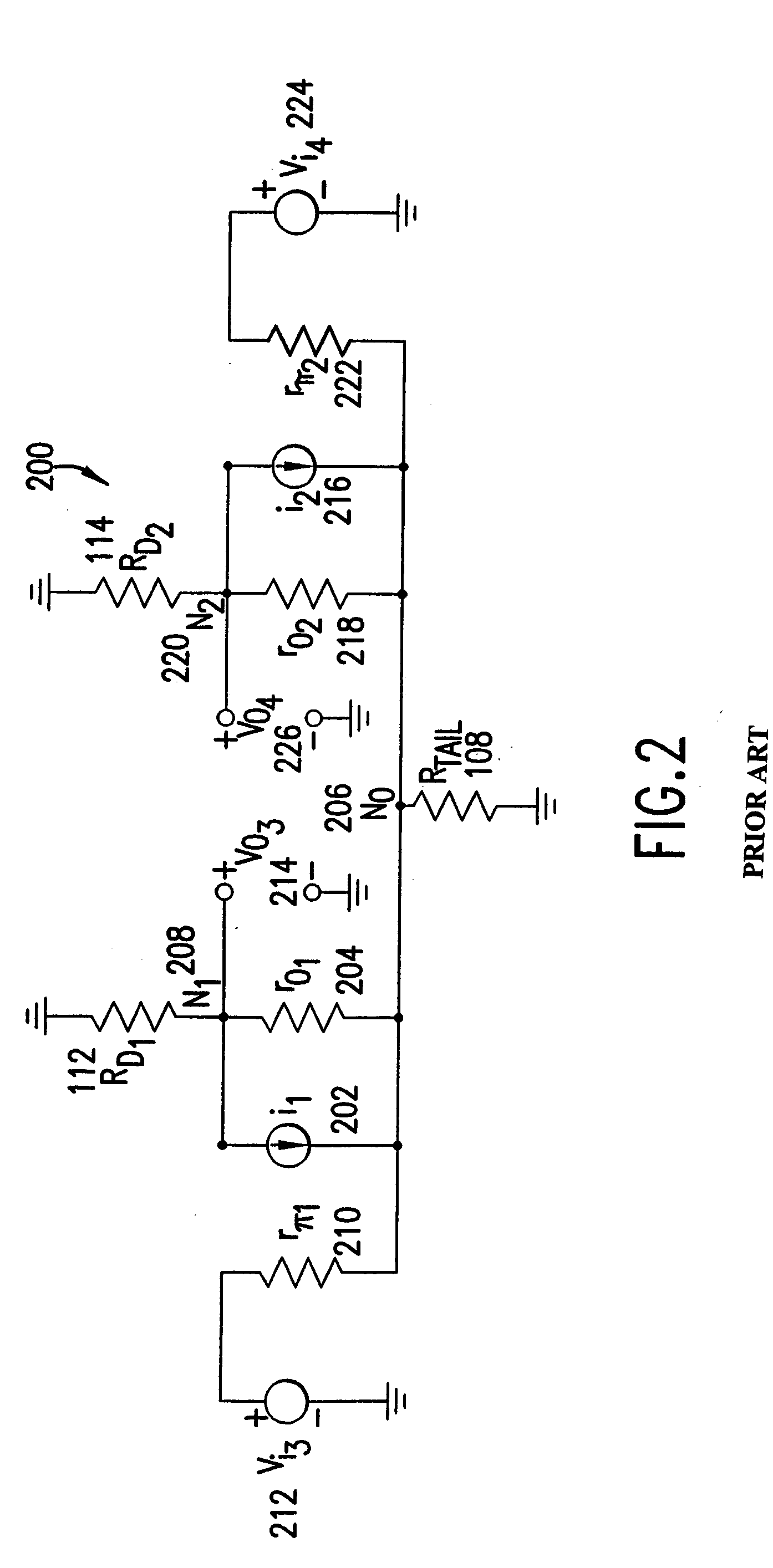Differential amplifier with large input common mode signal range
- Summary
- Abstract
- Description
- Claims
- Application Information
AI Technical Summary
Benefits of technology
Problems solved by technology
Method used
Image
Examples
Embodiment Construction
[0072] The present invention relates to a method of extending an input signal range of a component that receives the input signal. Specifically, the present invention relates to a design for an amplifier that extends its input signal range. More specifically, the present invention relates to a design for a differential amplifier with a large input common mode signal range.
[0073]FIG. 7 is a schematic diagram of a differential amplifier 700 configured to be a NMOSFET embodiment of the present invention. Differential amplifier 700 comprises first differential pair 502 of amplifying NMOSFETs M1 102 and M2 104 with source terminals connected at a first node “N3”702, and a second differential pair 704 of amplifying NMOSFETs “M9”706 and “M10”708 with source terminals connected at a second node “N4”710. First and second differential pairs 502, 704 are connected in parallel. The drain terminals of M1 102 and M9 706 are connected at a third node “N5”712; the drain terminals of M2 104 and M10...
PUM
 Login to View More
Login to View More Abstract
Description
Claims
Application Information
 Login to View More
Login to View More - R&D
- Intellectual Property
- Life Sciences
- Materials
- Tech Scout
- Unparalleled Data Quality
- Higher Quality Content
- 60% Fewer Hallucinations
Browse by: Latest US Patents, China's latest patents, Technical Efficacy Thesaurus, Application Domain, Technology Topic, Popular Technical Reports.
© 2025 PatSnap. All rights reserved.Legal|Privacy policy|Modern Slavery Act Transparency Statement|Sitemap|About US| Contact US: help@patsnap.com



